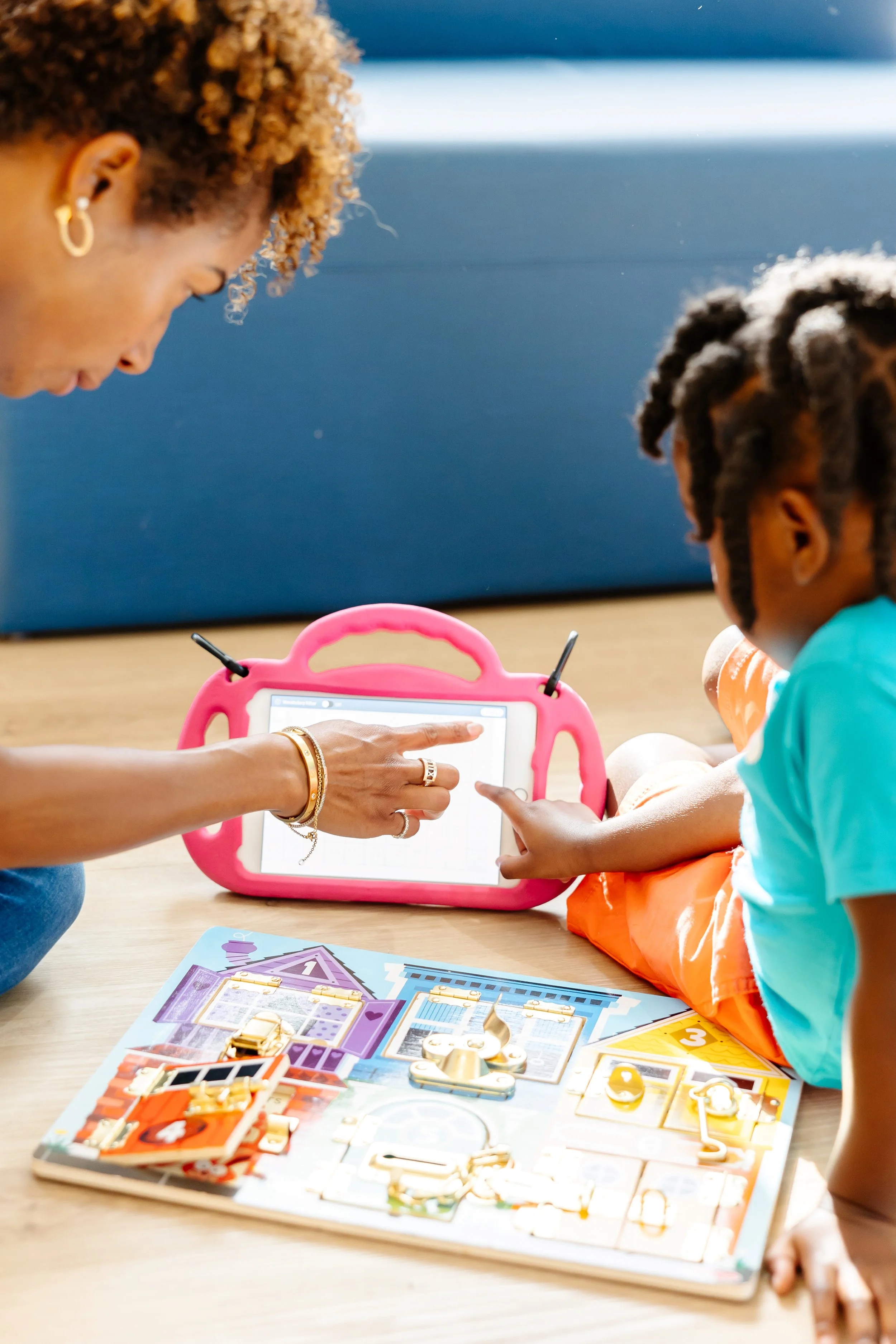10 Quick Tips for Introducing AAC to a New User
Therapist and child interacting with a communication device
As Speech-Language Pathologists,, you’re likely well aware of the incredible impact AAC (Augmentative and Alternative Communication) can have on a client’s life. Whether you’ve been working with AAC systems for years or you’re just getting started, introducing AAC to a new user can feel like a balancing act between guidance, patience, and, let’s be honest, a little bit of creative magic. But don’t worry—you’ve got this!
Here are 10 quick, practical tips for introducing AAC to new users, with a bit of inspiration and a whole lot of practicality to help you along the way.
1. Start with Core, Not the Whole Store
It can be tempting to introduce every button or symbol on a new device at once. But for someone just getting started, less is more! Start with a few core words like “help,” “go,” or “want” that can be used across multiple contexts. Once the client is comfortable with those, you can expand. Think of it as laying the foundation before you start decorating the house.
2. Be the Model
You’ve probably heard it a hundred times, but it bears repeating: modeling is everything. The more you use the AAC system yourself, the more natural it will feel for the user. Point to symbols, use the buttons as you talk, and make it part of your everyday communication. You don’t need to use the device perfectly (because that’s not the goal), but show how it fits into conversation and situations.
3. Engage Through Play and Interests
Learning to use AAC doesn’t have to be a rigid process. Build it into play, games, and the user’s personal interests. If they love dinosaurs, set up an AAC activity where they can talk about their favorite T. rex. If snack time is their favorite part of the day, practice asking for “cookies” and “juice.” When you make it fun, you make it functional—and everyone wins.
4. Patience is Your Best Tool
AAC learning is a marathon, not a sprint. Expect progress to take time, and celebrate the small steps. Whether it’s the first time they touch a symbol on their own or the first time they make a request without prompting, each win is a building block toward independence. It might feel slow at first, but trust the process—communication is happening, even if it’s gradual.
5. Honor Every Communication Attempt
While the AAC system is a powerful tool, it’s important to honor all forms of communication. If your client is using gestures, facial expressions, or even vocalizations to communicate, that’s valuable! Don’t overlook these nonverbal signals. AAC should complement these forms of communication, not replace them. Be sure to acknowledge all communication attempts as meaningful.
6. Collaborate with the Whole Team
As much as you might love your therapy sessions, the reality is that AAC success depends on everyone being involved—teachers, parents, caregivers, and even peers. Make sure the user has access to AAC across environments and that everyone knows how to support them. Offer training sessions, share quick tips, and make sure everyone is on board. After all, communication doesn’t happen in isolation.
7. Perfection is Overrated
Mistakes will happen—and that’s perfectly okay. If the user presses the wrong button or uses an incorrect word, treat it as a learning moment rather than a misstep. Gently guide them toward the correct choice, and keep moving forward. Communication isn’t about perfection; it’s about connection. So, embrace the process, mistakes and all.
8. AAC Should Be Available 24/7
Your client can’t communicate with their AAC device if it’s sitting in a drawer or left behind in the classroom. Encourage parents and caregivers to make the system accessible at all times—during meals, on car rides, and at the park. Whether it’s a high-tech device or a low-tech board, AAC should be there whenever communication happens. You wouldn’t ask a verbal child to stop talking after 3 p.m., would you?
9. Celebrate Every Success, No Matter How Small
That first intentional tap on the device? A breakthrough. Requesting a snack without prompting? Progress. Each step forward, no matter how small, deserves recognition. Make sure to celebrate these moments with the user, their family, and your team. Positive reinforcement builds confidence, and confidence leads to even greater communication success.
10. Adjust and Evolve
AAC systems are never static. As your client’s skills improve, their AAC needs will change. Don’t be afraid to reassess their vocabulary, adjust goals, or add some personalization. AAC systems should grow with the user. Stay flexible and responsive, and remember—it’s about meeting the client where they are today and helping them reach where they can be tomorrow.
Final Thoughts
Introducing AAC to a new user is a rewarding process that has the potential to unlock doors that may have been closed for years. The key to success is consistency, patience, and collaboration. By making AAC part of everyday routines, engaging through personal interests, and celebrating every win (big or small), you’ll empower your clients to find their voice—however that voice may sound.
Ready to make AAC magic happen? Get started today, and remember, you’re not just teaching someone how to use a device—you’re giving them the tools to communicate with the world. And that’s pretty amazing.
Would love to hear how you incorporate AAC into your therapy sessions! Let’s share ideas and keep learning from each other in the comments!

